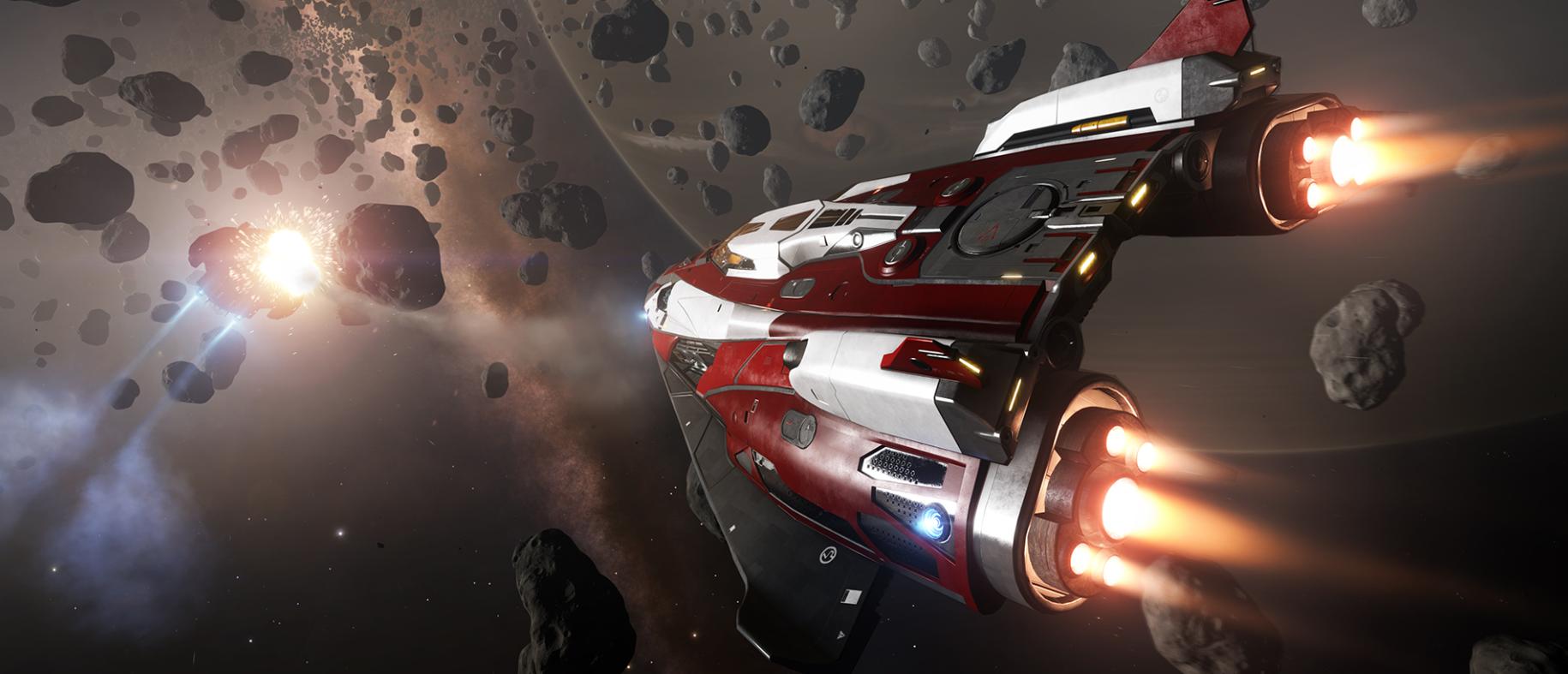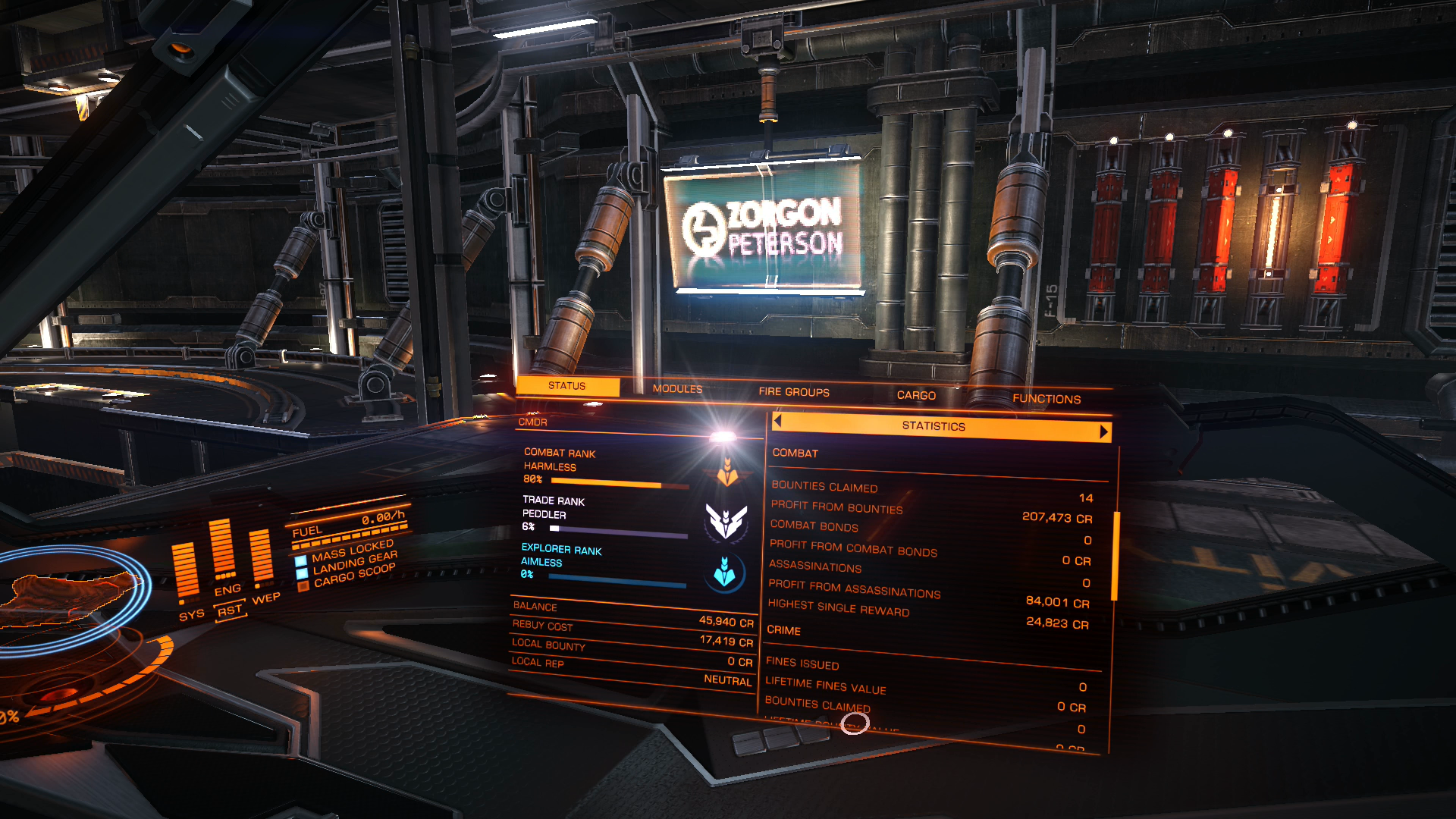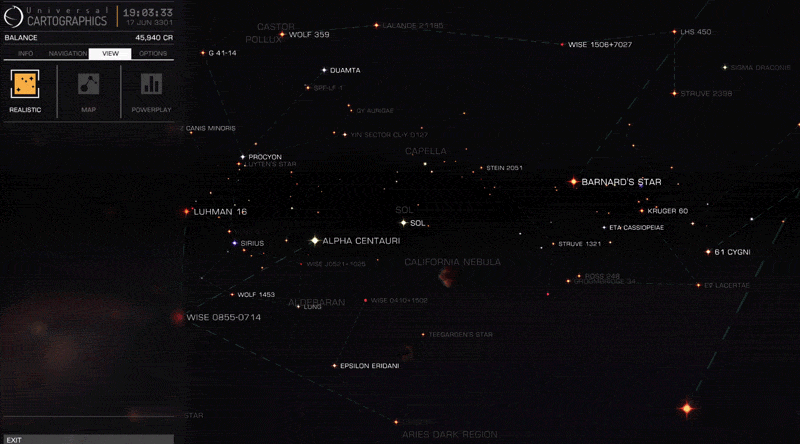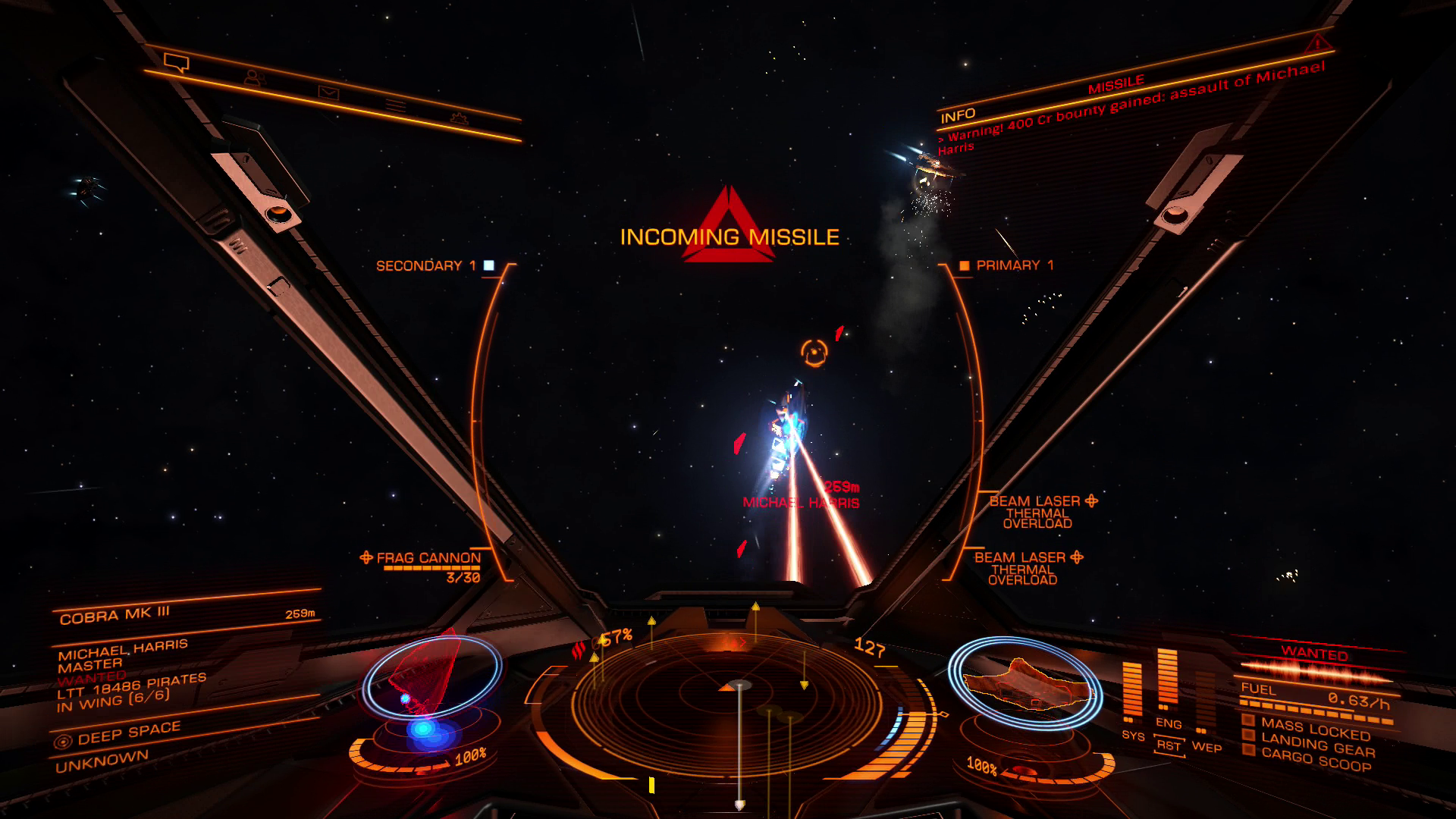Xbox One Game Preview: Thoughts on the current state of Elite: Dangerous
I've been playing Elite: Dangerous on PC for some time, and since launching on Xbox One the fledgling space sim is enjoying renewed attention.

In this article I'll be taking a look at Elite: Dangerous in its current form, now on Xbox One courtesy of the new Game Preview program.
Elite: Dangerous' for Xbox One was revealed back in March, along with the above trailer. It was the first time I'd heard about it as a console focused gamer. Elite: Dangerous has been available on PC since 2014 and enjoy's quite a following. The Elite series has a rich history dating back all the way to the 80s. Elite Dangerous itself is the sequel to 1995's Frontier: First Encounters.
Elite: Dangerous for Xbox One is available now, and will receive the CQC update next month. CQC (Close Quarters Combat) adds a standalone PVP mode that allows players to jump into pre-defined ship load-outs to compete against other players. Deathmatch, team deathmatch and other modes are making the cut, with PC and Mac versions planned for later in the year.
Elite: Dangerous was funded via Kickstarter, after failing to reach a consensus with any third-party publisher. Despite being insanely gorgeous and boasting a "massively multiplayer" game world featuring billions of Milky Way star systems, I'm finding it hard to recommend in its current incarnation.
The Dangerous line between action adventure and simulator
A sim recreates the conditions of a real world scenario, offering little 'gamification' in return. In Flight Simulator, you're not playing as Joe Flydude on his quest from crop duster to F-16 pilot. You're simply flying planes using realistic controls, in a realistic setting, in realistic conditions. There are no points to accrue, no plot to unravel. Sims provide a sense of escapism in a different way to 'mainstream' games.

Elite: Dangerous in its current incarnation falls somewhere between the lines of action adventure game and simulator. There are brief snippets of brilliant action combat, hidden between harsh amounts of grind and time devouring travel, all wrapped in a breathtakingly rendered cosmos.
For a game that boasts an immersive experience (to the point of supporting Oculus Rift) it's contradictorily intent on booting you out of the game. The training missions (which you likely won't complete in the space of the Xbox Game Preview Trial) don't even scrape the surface of this complex game. I spent a significant chunk of my time with Elite: Dangerous reading wikis and watching YouTube, researching how to play. There is no tutorial for when you first jump into that cockpit, nothing to guide you or explain Elite: Dangerous' various systems.
All the latest news, reviews, and guides for Windows and Xbox diehards.
Elite: Dangerous is punishingly inaccessible, but I wanted to participate in that action-packed, "massively multiplayer" game described in their marketing materials, so I persevered. Here are my thoughts (and feedback) on Elite: Dangerous in the Xbox One Game Preview program.
Unforgiving galactic grinding
After mastering docking, basic space flight, supercruise flight, and hyperspace flight, I felt I was ready to undertake my first mission. The amount of control you're given over your ship is equal parts staggering and gratifying. Your ship is comprised of modules that you can customise as much as your chassis will allow.
Hardpoint modules allow you to attach weapons, of which there are also various types. Utility modules allow you to set up defences against incoming attacks. There are shield generators to consider, various types of sensors and accessories all of which require a big enough Power Bank to remain active. Each of these modules can be deactivated at will, should you wish to divert more power to your shields, weapons or engine, which can also be controlled at will. If you're simply cruising, tapping up on the d-pad will divert all power to your engines making you faster, tapping right will enhance your weapons, and tapping left will enhance your systems. Tapping down balances the power out, which is probably the best when it comes to general combat scenarios. Very few of these aspects are explained in-game.

Outftting, no space jacuzzis yet though.
After awkwardly lifting your loaned Sidewinder out of the dock, first mission in tow, the Galaxy dauntingly opens itself to you. In Mass Effect, Shepard circumvents the problems inherent in space travel using alien Mass Relays, which launch ships millions of light years across the cosmos in an instant. Elite: Dangerous has similar technology, except you plot your jumps manually. One of your ship modules makes up your fuel tank, the size of which determines how far you can jump before you need to refuel. Travelling across the chartered galaxy can take hours in hyperspace, and those areas represent an infinitesimally tiny portion of the available star systems, billions of which remain unexplored.
Simply travelling within a star system can take an incredibly long time, often well over 10 minutes between destinations. I found myself watching TV, controller on the desk while I waited for supercruise travel to play out. These aspects of Elite: Dangerous place it firmly in the simulator camp. I'm not sure many console gamers - drawn in by the action-packed launch trailer - will be willing (or able) to spend the time it takes simply travelling for the most basic missions.
If you're limited on free time, Elite: Dangerous will devour it like a black hole. The responsibility for this lies partially on Elite: Dangerous' mission system.

Fetch quests, in space.
Mission text will direct you to a system, but never to the exact location of your mission objective. This is often incredibly frustrating. I spent 4 hours blindly searching a system for "Unidentified Signal Sources" in supercruise to kill pirates, who were reportedly "plaguing" the area. Despite shooting down various wanted ships emblazoned with Jolly Roger decals, these weren't the right type of pirate. Eventually, the mission request expired. I failed the mission having never found that specific type of pirate, defined only by the system I was in. Despite my mission failure - worth around 20,000 credits - I had killed a dozen wanted ships racking up bounty rewards of over 100,000 credits. Within lies the problem with the game's mission system.
Elite: Dangerous' quests aren't worth while. Partially because they often ask you to look for a needle in a haystack and partially because they yield very little monetary reward. The best ways to make money and grind rep seem to involve camping pirates around Resource Extraction Sites, or if you're combat adverse, grinding asteroid mining for hours.

All the game's system menus are built into the cockpit, designed to be viewed by turning your head on Oculus Rift..
I'm no stranger to grinding. I amassed a ridiculous amount of gold in World of Warcraft and collecting the materials necessary to craft that Arcanite Reaper could take weeks back in vanilla. Grinding is therapeutic sometimes. When you finally purchase that big item you've been chasing the satisfaction is palpable. The problem is that there's not a great deal of stuff to spend your credits on. Each ship simply serves as an upgrade over the last, and the weapons follow suit. Some may find it fun grinding hours to upgrade a Pulse Beam from grade C to grade B, but, eventually you'll hit a ceiling, and realise that there's not much to busy yourself with.
Uncompromising galactic immersion
Despite these assessments, I found myself getting out of bed at 3 AM to continue playing last night. Like an Interdiction beam pulling me out of supercruise flight, there's an almost primordial draw about Elite: Dangerous. Some may scoff at this comparison, but to me, Elite: Dangerous bears a hint of Minecraft in the sense you're expected to find your motivations. Like Minecraft, Elite: Dangerous gives you a few utilities, and sends you naked into an unfathomably gigantic world. You can be an outlaw, smuggling goods and killing merchant ships, or you can be a bounty hunter, targeting those outlaws. You can be a trader, moving goods along the game's many trade routes or an asteroid miner, gearing up your ship with mining lasers and massive hauling capabilities.

Travel to every star.
These activities alone are thin in terms of actual gameplay. You fly somewhere, click on something, and then fly back. You could reduce a lot of games down to such simplicity, but I think many picking up Elite: Dangerous this week will miss the point. The randomness, the sheer chaos of surviving Elite: Dangerous' Milky Way is perpetually exciting. While travelling to one of those boring fetch objectives two NPC pirates ripped me out of faster-than-light travel using a tractor-beam-like interdictor. They asked me to jettison my cargo or be destroyed. I decided to engage them in combat, rather than face the humiliation of an empty cargo hold. Elite: Dangerous dog fighting is intense and rewards you for altering your tactics to suit your situation. Reduce your throttle to turn more sharply, divert power to your weapons if you're fully behind your target, fire missiles when their shields go down. The explosive rip of a vanquished space ship is intensely satisfying. Despite the odds, I claimed the bounty on both, yielding a large sum of credits as a result.
Frontier Developments claim that Elite: Dangerous is a living world, and on the surface it's hard to discern this fact. Upon closer inspection (hours spent) I realised that it truly is. News Bulletins you can read in the game's various docking stations inform you of fresh wars, trade disputes and other problems ravaging human space. I decided to fly into one of these conflict zones, only to be greeted by a mass of cruisers blasting each other with lasers and various other mounted weapons.

Repair costs are expensive.
There are so many little things waiting to be found and enjoyed that it fills me with optimism for the future of the game. The foundations of Elite: Dangerous are intimidating not only for its complexity, but because it has the potential to be a game you never want to stop playing. IF Frontier Developments can apply that attention to detail to the game's systems that still need work.
The Dangerous road ahead
To say the content on offer in Elite: Dangerous is shallow is probably an understatement, but that doesn't matter. Elite: Dangerous represents the first of Xbox One's Game Preview games. This means that you enjoy the concept and you're buying in early to help fund future development.
- Lead developer David Braben recently told Ars Technica that the CQC PVP mode is intended as an out-reach to console gamers who might struggle with Elite: Dangerous' learning curve . It has no effect on the Open Play galaxy.
- Like all Game Preview games, should you wish to purchase Elite: Dangerous you will be taking a lot on faith. When it comes to activities, Elite: Dangerous is diffuse, but it's supplemented with the dynamism of its game world.
- Calling it 'massively multiplayer' is completely misleading, as only 32 players can share an instance of the galaxy at any one time. I've never heard Battlefield 4 use the 'massively multiplayer' moniker for its Conquest mode. Databases for system discovery and world events are linked, but throughout my 12+ hours with Elite: Dangerous on Xbox One, I haven't encountered a single human player.
- There are no plans to add in-game systems for guilds or clans for the foreseeable future, which I think is a huge mistake. EVE Online has benefitted massively from the publicity stemming from its player corporation drama.
- Figuring out how to play will require a trip to YouTube, as the in-game training missions offer little real help.
- Planetary landings and the ability to walk around your ship's interior are slated for future patches.
- Additional ships and both new free and paid content are also being planned.
- The game suffers from slowdown to the point of crashing on Xbox One, but occurrences are not frequent enough to hinder gameplay.

The merits of early access are hard to discern. Will Elite: Dangerous acquire a negative perception for releasing still in development? Or will the extra funds ensure the game will eventually become something truly compelling.
Despite the frustration I had last night failing to find those specific pirates, I find myself yearning to jump back into my ship as I write this. Elite: Dangerous is special, even in this prototypical form. Whether it belongs in mainstream gaming or on the obscure indie periphery will depend heavily on how Frontier Developments communicate the game's on-going development. A game self-described as "massively multiplayer" is only as good as its player base, and Elite: Dangerous' supermassive black hole is failing to welcome and connect those players in-game.

Jez Corden is the Executive Editor at Windows Central, focusing primarily on all things Xbox and gaming. Jez is known for breaking exclusive news and analysis as relates to the Microsoft ecosystem while being powered by tea. Follow on Twitter (X) and tune in to the XB2 Podcast, all about, you guessed it, Xbox!
